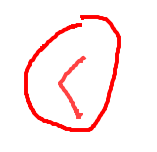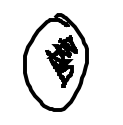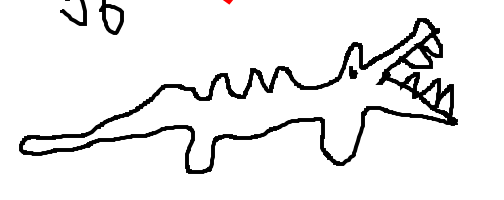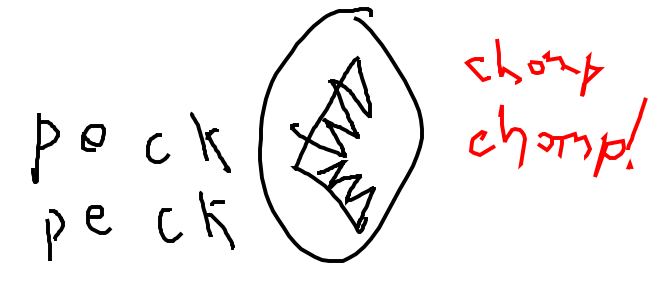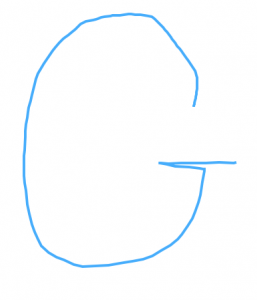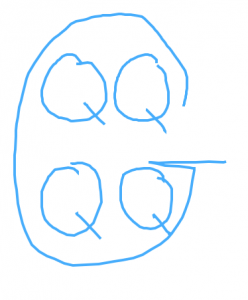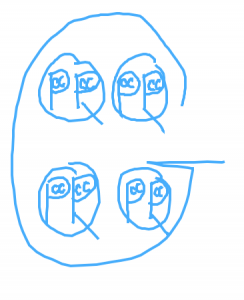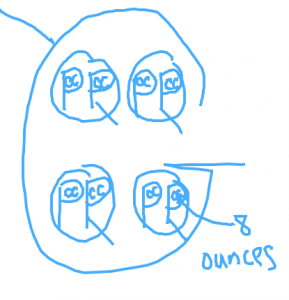Posts Tagged as "visual"
How to navigate the space-time continuum (or, a visual way to solve elapsed time problems)
Wednesday, January 5th, 2011When I was growing up, I learned to do elapsed time problems by subtracting the start time from the end time (and when necessary, borrowing while keeping in mind that there are 60 minutes in a hour).
This technique always seemed convoluted, so when a fifth grade tutoring student of mine was working on elapsed time problems, I tried this visual way of solving them, which seemed to be much more intuitive for my student.
Let’s say you have a problem like this: A train departs at 2:55 and arrives at 5:18. How long is the train ride?
Draw in the beginning and ending times, marking the hours as you go:

Draw loops to count the hours:
Draw loops to count the minutes left at either end:

Add the minutes together:
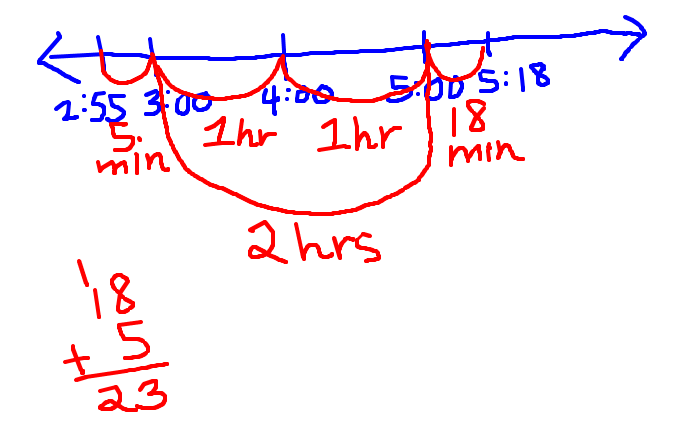
Combine the hours and the minutes, and you’re done!
That’s it!
Once you do a few of these, there’s lots of different ways to draw the loops. For example, you could start at 2:55 and loop to 3:55 (1 hour), 4:55 (2 hours), and then from 4:55 to 5:18 (4:55 to 5:00 is 5 minutes; 5:00 to 5:18 is 18 minutes; 5 + 18 = 23 minutes) to get 2 hours and 23 minutes.
And after drawing some of these out, you can use the same process to do elapsed time problems mentally, too. Just think about counting from one time marker to another and adding up the different loops.
*Visiting from this week’s Carnival of Homescooling? Welcome, I’m glad to see you here! Below are some more posts you may enjoy.
Related posts:
Gallon Man to the Rescue!
An easy way to remember how logarithms work
Mind meld is real!
Confused about fractions? Visualize brownies, not pizzas
Comment on this post (21)








